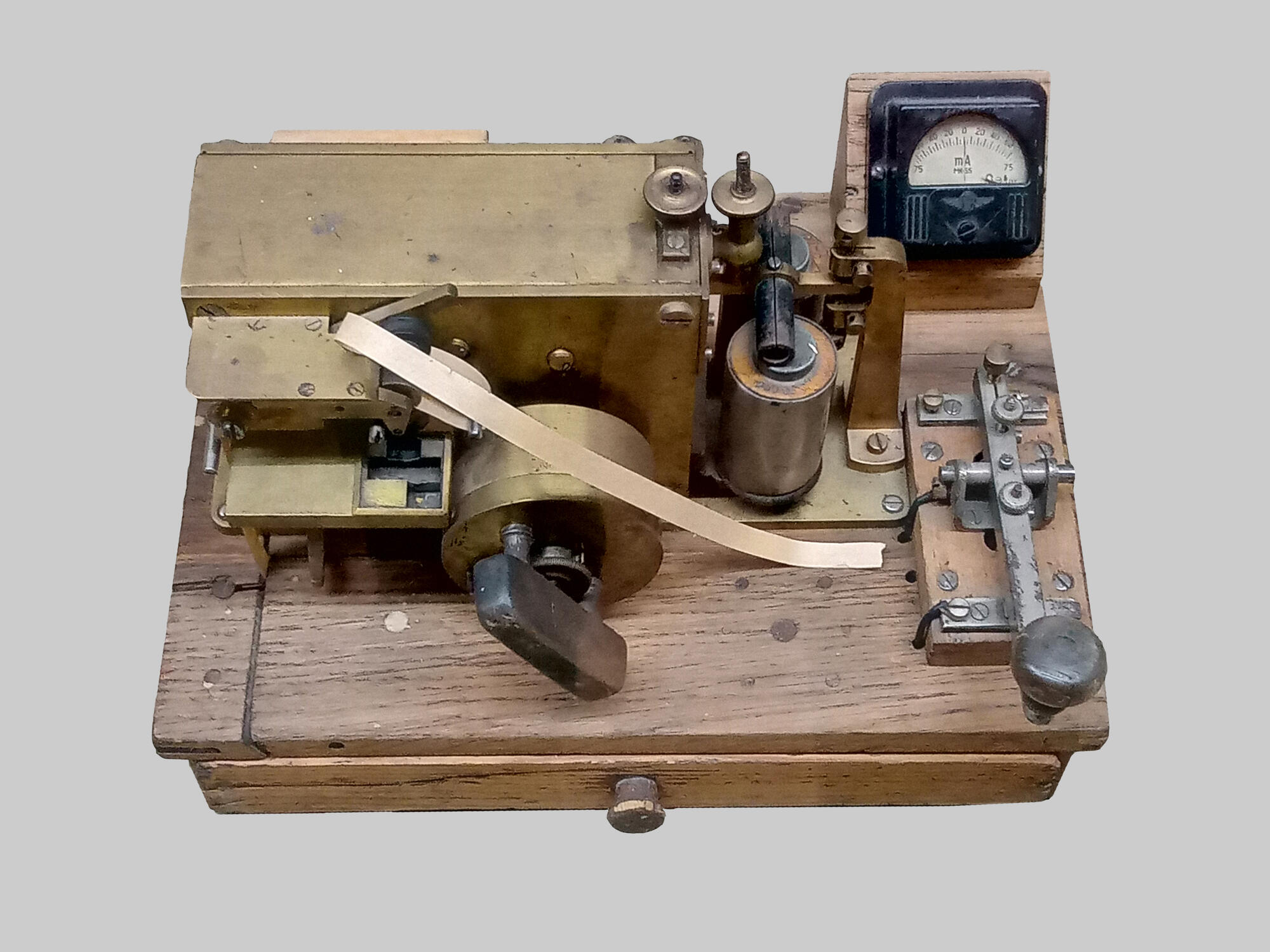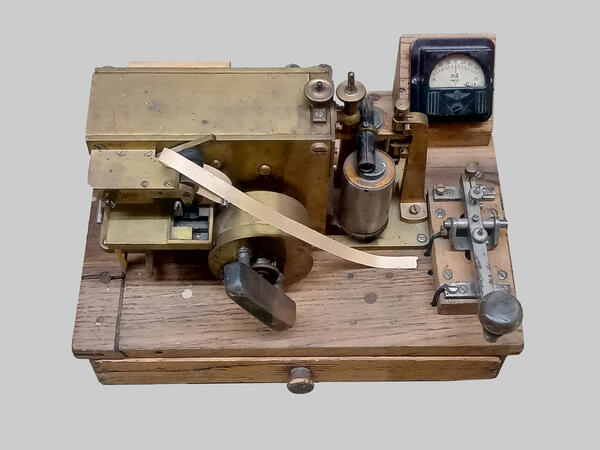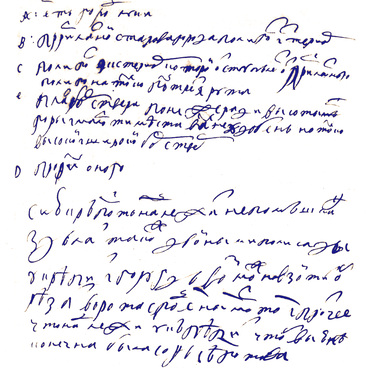The slow and unreliable transmission of information slowed down progress, and people looked for ways to speed it up. Telegraphs played an important role in the formation of modern society. With the invention of electricity, it became possible to create devices that could instantly transmit important data over long distances.
This model of the Morse telegraph was used at numerous stations of the Russian Railways until the mid-1950s, and, in some remote regional directions, until the mid-1960s.
The structure of this telegraph is very simple. The transmitter of the Morse telegraph is a telegraph key, and the receiver is an electromagnet that controls the operation of the writing mechanism. The transmitter closes and opens the electrical circuit.
The transmitter itself is a metal lever, the axis of which is in communication with the line wire. A spring at one end of the lever is pressed against a metal protrusion with a binding screw. With the help of this screw, through a special wire, the lever is connected to the receiving device of the station and to the ground. If you press the other end of the lever with your hand, then it will touch the other protrusion connected to the battery, and the current will go into the line to the other station.
The main parts of the receiver are a vertical electromagnet, a lever in the form of a rocker arm and a clock mechanism for pulling a paper tape on which the lever leaves conventional signs. The electromagnet, when current passes through it, attracts an iron rod located at the end of the lever. At the same time, the other arm of the lever rises and presses the steel point at its end against the paper tape, which continuously moves over it with the help of a clock mechanism.
When the current is interrupted, the spring pulls the lever back to its original position. Depending on the duration of the current on the tape, the tip of the lever leaves traces either in the form of dots or in the form of dashes: various combinations of these signs make up the Morse code.
The reason for the practical unsuitability of many electromagnetic telegraphs was the complexity of their structure, bulkiness and low reliability. In these indicators, the Morse telegraph significantly surpassed many other designs. Moreover, the device made it possible to organize communication over long distances. Simplicity was a feature of the Morse telegraph which ensured its great success and many years of use in railways in all countries.
This model of the Morse telegraph was used at numerous stations of the Russian Railways until the mid-1950s, and, in some remote regional directions, until the mid-1960s.
The structure of this telegraph is very simple. The transmitter of the Morse telegraph is a telegraph key, and the receiver is an electromagnet that controls the operation of the writing mechanism. The transmitter closes and opens the electrical circuit.
The transmitter itself is a metal lever, the axis of which is in communication with the line wire. A spring at one end of the lever is pressed against a metal protrusion with a binding screw. With the help of this screw, through a special wire, the lever is connected to the receiving device of the station and to the ground. If you press the other end of the lever with your hand, then it will touch the other protrusion connected to the battery, and the current will go into the line to the other station.
The main parts of the receiver are a vertical electromagnet, a lever in the form of a rocker arm and a clock mechanism for pulling a paper tape on which the lever leaves conventional signs. The electromagnet, when current passes through it, attracts an iron rod located at the end of the lever. At the same time, the other arm of the lever rises and presses the steel point at its end against the paper tape, which continuously moves over it with the help of a clock mechanism.
When the current is interrupted, the spring pulls the lever back to its original position. Depending on the duration of the current on the tape, the tip of the lever leaves traces either in the form of dots or in the form of dashes: various combinations of these signs make up the Morse code.
The reason for the practical unsuitability of many electromagnetic telegraphs was the complexity of their structure, bulkiness and low reliability. In these indicators, the Morse telegraph significantly surpassed many other designs. Moreover, the device made it possible to organize communication over long distances. Simplicity was a feature of the Morse telegraph which ensured its great success and many years of use in railways in all countries.


